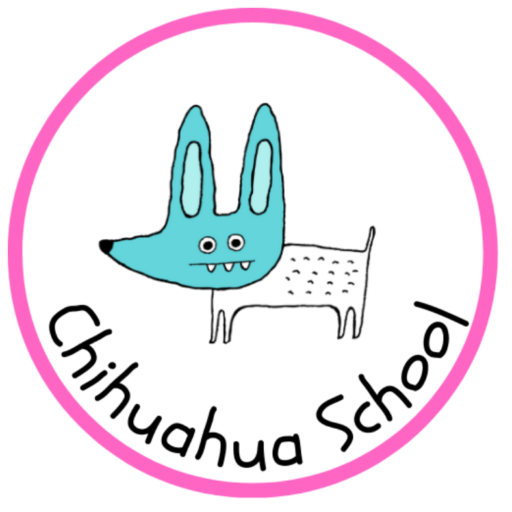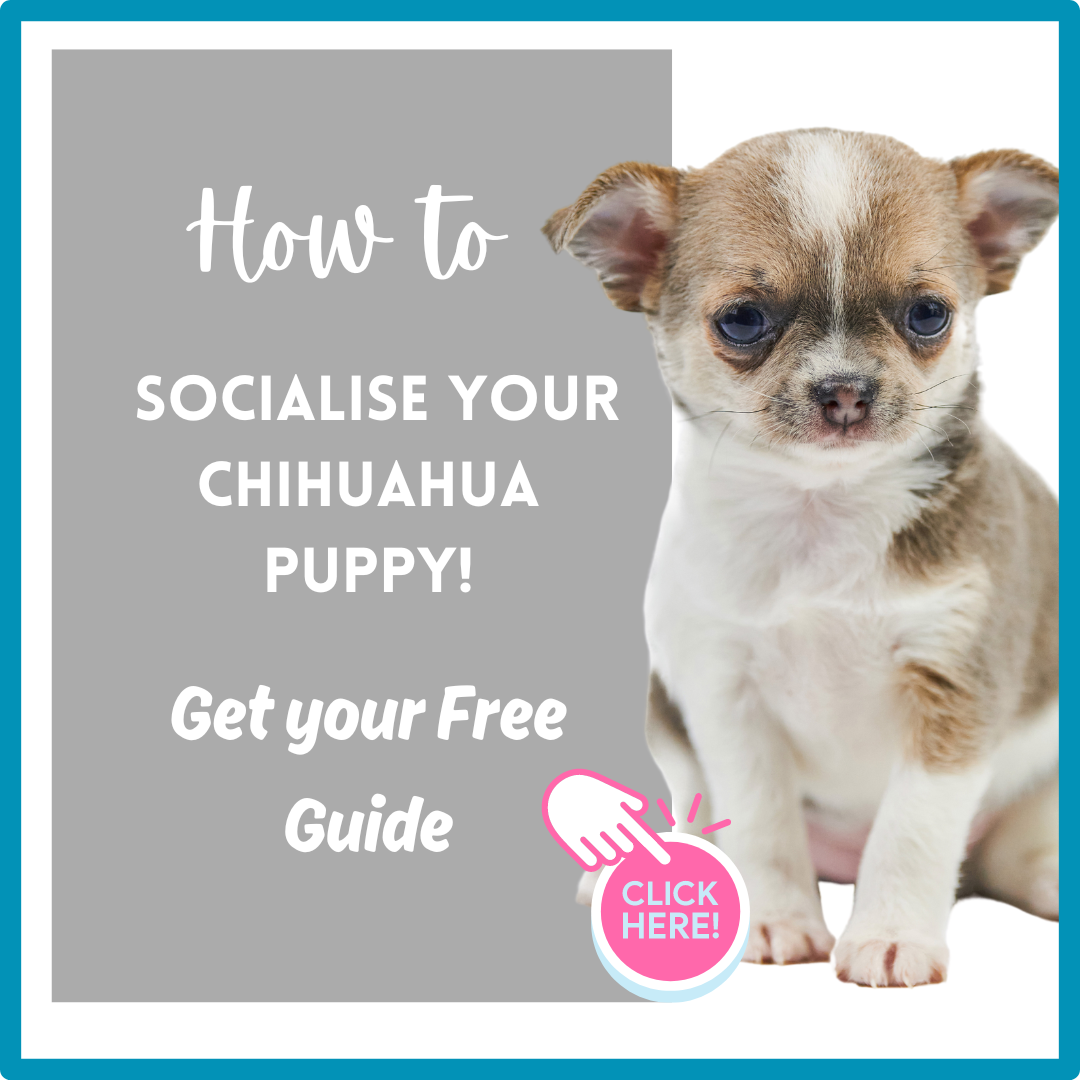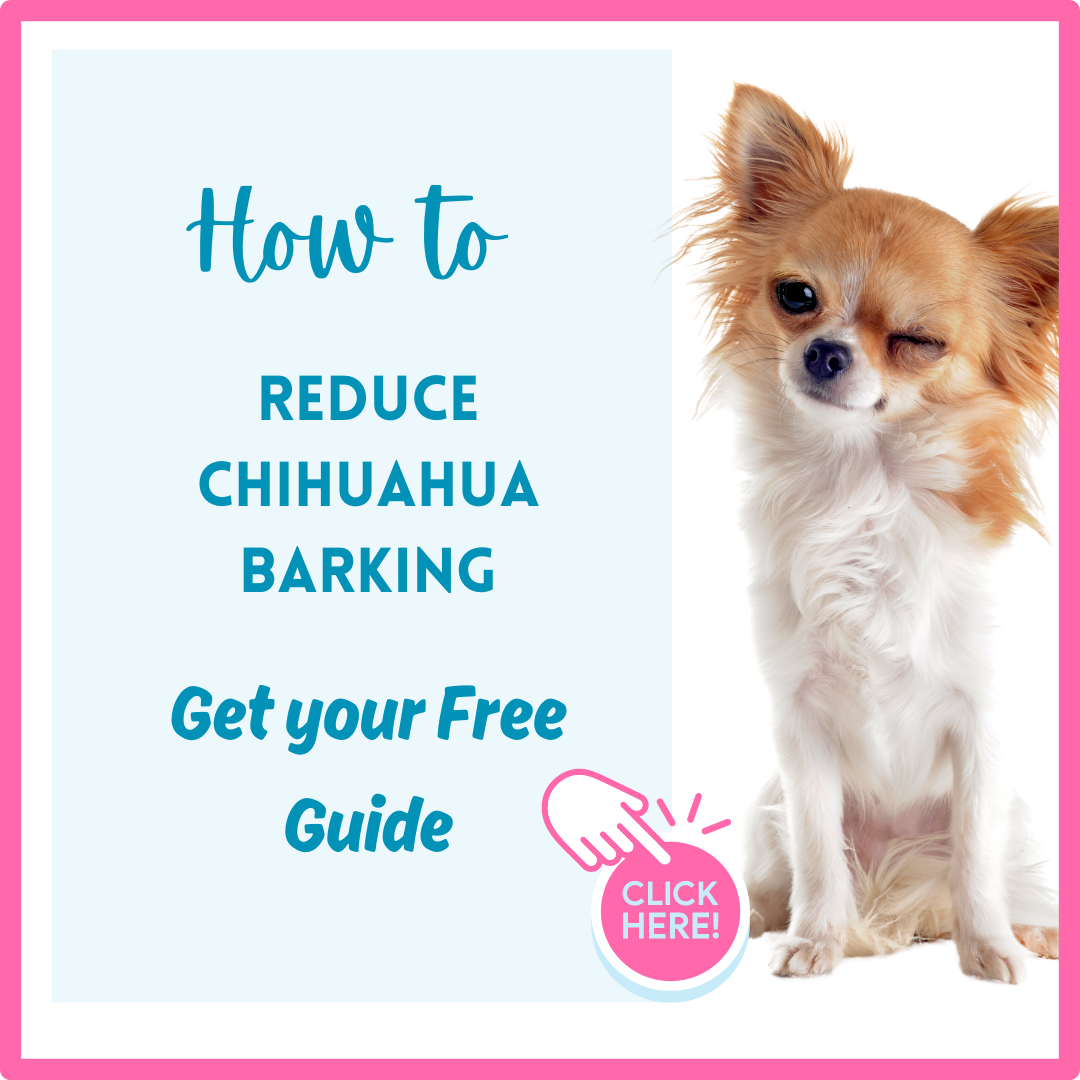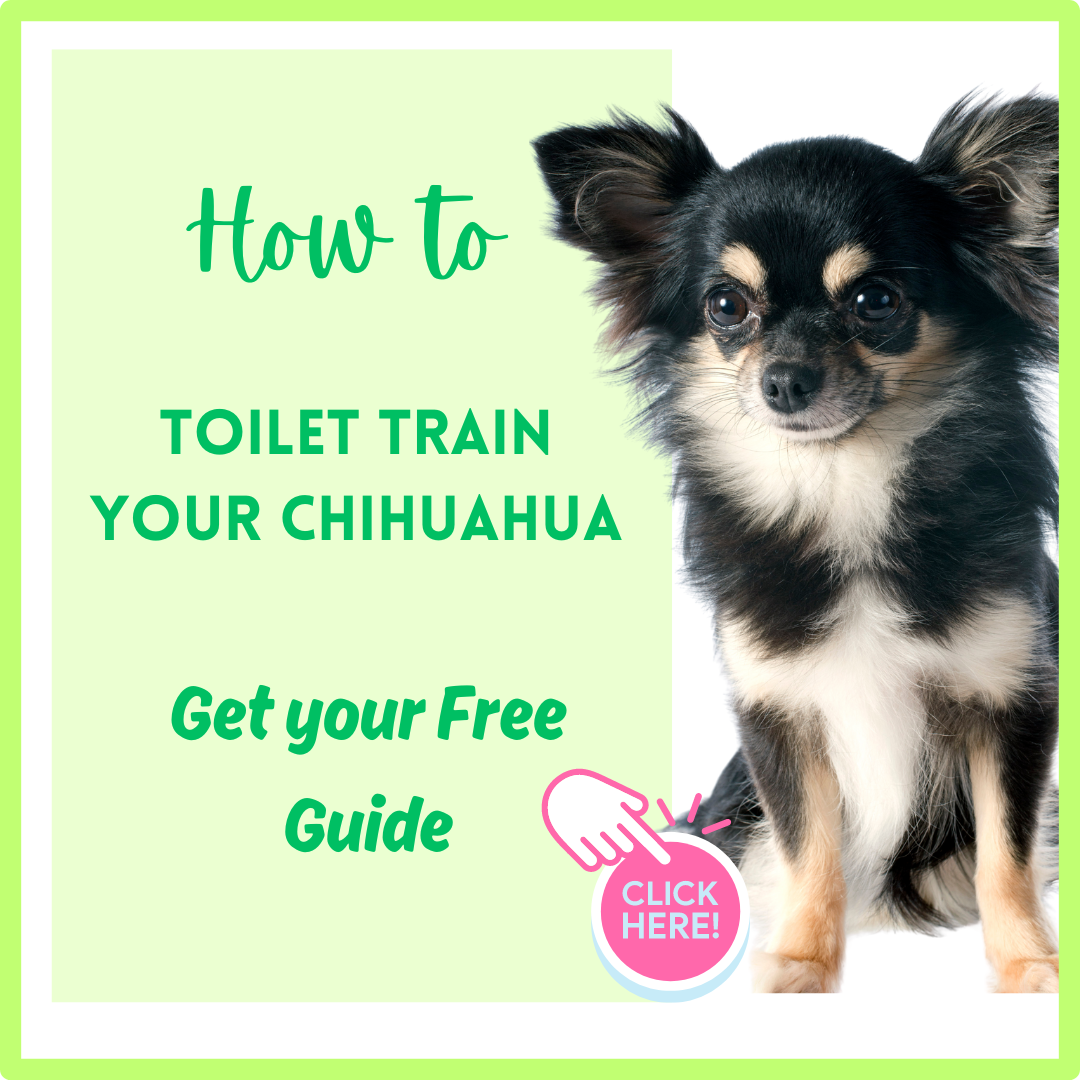How to tackle an overweight chihuahua
It’s easy to overfeed a chihuahua because they are so small, just a few grams too much food and you have an overweight chihuahua. So if your chi is a bit on the chubby side don’t beat yourself up too much. Just as long as you’re ready to tackle it.
Obesity amongst dogs is a growing issue and a lot of the problem is down to dry food, not weighing out food portions and feeding treats. Being overweight can have lasting health consequences for all dogs like: heart disease, diabetes and arthritis.
Being too heavy may put pressure on an existing luxating patella. It can also aggravate problems with anal glands because, if the glands are covered in fat, they will not easily express.
Evidence it contribute to canine cancers
There is a growing body of evidence that suggests over the longer-term, being overweight can contribute to cancers.
Food motivated
Some chihuahuas are highly food motivated and will scavenge relentlessly. Minnie is one of the greediest dog’s ever and is an expert at hoovering up scraps and crumbs. Keeping her weight under control requires diligence, we monitor her weight regularly.
It can be a daunting task to try and get an overweight chihuahua back into shape, especially if bad habit have crept up on you, but getting them back down to slinky chi chi is not as hard as it feels.
Shift in thinking
It requires a shift of thinking, and owners need to realise that the treat or little extra that you give them because you love them, could be shortening their life, contributing to poor health and huge vet bills. The reality is, we all need to toughen up. Instead of using food to show affection play a game, give a belly rub or go out for a walk.
No need for diet food
The good news is it’s easier than you think to get your chihuahua back into shape, and you don’t need to buy expensive prescription foods to get weight under control. Just feed the correct amount of regular food for their weight. Diet food from the vet’s is often unpalatable, expensive muck made from the worst ingredients.
Food is food to a dog
Here is another big shift in thinking. Food is food to a dog. They lick their bums, eat horse poop and cat vomit so they aren’t that fussy. My point is here, if you’re training your dog, use their daily food. Hold 20-30% back from their breakfast and dish it out over the day as training rewards. They really aren’t going to turn their nose up and stalk off in a huff because it’s not a Lily’s Kitchen mini apple and pork sausage. When you add up the cost of some of these treats they are costing you £35 per kilo!
However while food is food to a dog, that doesn’t mean feed them any old grub. Understanding what you are feeding your dog is important. Stay away from food filled with fillers, rice and grain. You want something high protein and preferably not dry.
Get everyone on board
It goes without saying that good habits start from puppy hood and it requires the whole family to cooperate.
Key essentials to dealing with an overweight chihuahua
- First of all, it’s a good idea to have only one person responsible for feeding.
- No one gives the dogs treats, and if training treats are being used then it must come out of your chihuahua’s daily food allowance.
- Keep the dogs away from the table when the family are eating, teach them to go and lie down or put them into another room. The sad face as they watch you eat is very effective at getting titbits.
- Weighing out food rather than just chucking in the bowl is key. Especially as feeding guidelines on commercial dog food are often so vague. Knowing the amount you are feeding will help you make measured adjustments.
- Write down and record weight and the amount you are feeding.
- Weigh your dog on a regular basis. If he starts to put on weight, then you can reduce the amount you are feeding down by a few grams. Just a 10gm reduction in her food helped Minnie lose 500g and get down to her target weight of 4.8kg
- Feed for the weight your dog should be not the weight they are now.
How to tell if you have an overweight chihuahua
Vets use a table of body condition to assess if a dog is overweight or malnourished, looking at where your chihuahua is on the scale will give you a good idea of how overweight they may be. For instance:
- Does your chi have a pot belly?
- Can you see his waist or tuck? (The part that goes in after the ribs)
- Are their ribs easy to feel under their fur? If they are cushioned and you need to dig for them, then he is carrying extra fat.
But if you are not sure ask your vet. Most vets are keen for dogs to lose weight and will be happy to help.
How you feed is important.
There are two main ways people feed their dogs. Meal feeding and free feeding.
Free feeding is when you put down the food and your chihuahua can eat when he likes. But, if you have cats who can be partial to dog food, or more than one dog it can be difficult to monitor who is eating what.
Meal feeding is when your chi is given dinner at set times. This does make it much easier to monitor the amount. Both methods have pros and cons. You can read more about this here.
But if your chihuahua is on a diet, then it’s better to go with meal feeding as you can monitor exactly what is being eaten. You can still kong feed or scatter feed if you are working on calming strategies with your chihuahua. Meal feeding also works better if you have multiple dogs and are feeding wet food.
What to feed your chihuahua
Feed the best quality food you can afford, but the other side of the coin is expensive doesn’t mean quality. In general stay away from dried food. Even mixes made for chihuahuas as this is just marketing nonsense. These premium priced science looking products are often made from the least desirable ingredients. Learning how to read food labels is helpful. Read more about understanding food labels here. Just don’t be taken in by the label on the front. They have little to do with what is actually in the tin or packet.
Dog’s don’t need rice, grain or food with carbohydrates. They do need a range of high quality protein and fat, from meat (red & white) fish (white & oily) eggs, offal and heart.
Vegetables do play some part in a dogs diet. Any veggies you feed your dog should be cooked or grated and never given in raw lumps as they can cause upset belly or even a blockage. Veggies should only ever form 10-20% of your dogs daily food.
Food delivery for dogs is now very popular with several companies offering comparable services. Semi moist fresh food is also becoming popular. There are also some better quality canned foods, Butchers and Cannagan spring to mind. Although canned food is still considered ultra processed and your chi is better with fresh or raw.
Life stage
Dogs need different amounts of food depending on their life stage.
For example, a complete dog male or female will need to eat more than a neutered dog. An older dog will need to eat less than a young dog. A puppy can need 10% of their body weight. If you are not sure then ask your vet, they will be happy to help.
Avoid some of the online calculators that tell you how much to feed your dog and how much they should weigh. I have looked at a few and the information has been very suspect. If in doubt ask your vet.
Take away
- Stop or significantly reduce treats.
- Weigh your dog so you can plot progress.
- Weigh out food
- Feed for her ideal weight not her current weight.
Discover more from Chihuahua School by Chihuahua Power
Subscribe to get the latest posts sent to your email.









Wow! I found this very interesting.
I just adopted a 9 or 10 year old 16 lb female Chihauhua from an elderly woman who had to go to assisted living. I have a 16 year old Chihauhua mix at home and his companion died so we had room for a rescue.. She is super sweet, but she is a bit aggressive at feeding time! I feed her fresh pet or homemade dog food. I give her 1/4 to 1/ 2 cup two times a day. I give her one very small treat before bed. I also noticed for some odd reason she doesn’t drink much water so I put low salt chicken broth mixed with water into her meals. It’s been a little over a week and she’s only lost 6 oz. I wonder if I am feeding her too much? She breathes heavy sometimes and doesn’t exercise well but I try to coax her to do just a little each day. Also she had terrible hard as rocks anal glands which I never thought of it possibly being because of the weight. Thank you for your blog post..
Regards,
Lisa
Thank you, I’m glad you found it interesting. Are you one out mailing list? I have been sending out a Free ebook on Chihuahua barking and behaviour.
Hi there,
Thanks for finding our page. You may like to join our New Chihuahua School Facebook group: https://www.facebook.com/groups/chihuahuaschool
Fresh pet is a good food. I feed it to my dogs and I am very fussy about what they get. The trick is to weigh out their daily food allowance which included any training treats. Food is food to a dog, packaged treats is really just for humans. Another good idea is to use their dinner for training. Set aside a certain amount. They really don’t mind as long as they are getting something tasty. If they have upset tums then try adding a probiotic. Dr mercola do a good one.
Hi Louise!
I have 3 chihuahuas, all of them in different age ranges, 16, 8, and my little girl ( the other 2 are boys, she is 3) I have weight issues with my 3 year old. When I rescued her ( I am a nurse, and her human’s were elderly, and could not keep up with a puppy, I fell in love at 1st sight. They were giving her a brand of food in the US called Caesars, which my vet said is the “McDonalds of dog foods, I changed her diet, and I noticed her slimming down, Recently, like the last 2 weeks, I have noticed her belly appearing a little bloated, She has also had diarrhea the past 2 days, with one instance, she let out a loud, and large amount of gas. I have been feeding the 3 of them fresh pet as of lately, but will not lie, I do go a bit heavy on the treats, ( I see now how bad that is) I am so worried, she is also breathing a little heavier. Any suggestions would help. I am SO THRILLED I came across your page, as I am also in love with Chihuahuas, and the breed, and really need education, so i can keep my little angels healthy. Thank you so much!
Thank you, I’m glad I was able to help.
I have started reading your very informative posts about chi’s.
We have a 11lb rescue who should really weigh 8 pounds.
I will attempt to follow your guidelines. I cook for her evening meal which
is either chicken and veg or lean mince cooked in salt free stock.
I usually cook for about 5 days worth.
I leave some high quality kibble down for her in the morning.
It is from a new company here in the US called SUNDAY.
Many thanks
Olivia
Hello,
thank you for the feedback, I’m glad the article helped. Keep in touch and let me know how you get on. I’m thinking of starting a diet club, do you think people would like that?
Great article Louise. With the shutdown and recently arctic winter, walks with our chi have been too far and in between. She has developed some small rolls of fat. She is about six years old and 8.5 lbs – a fawn head. Anyway, she does not like treats but loves chicken and turkey lunch meat, eggs, sometimes carrot. Anything she is given is in pieces about the size of a few grains of rice, always very very small. We give her a 1/3 cup of dry food mixed with a small amount of pumpkin puree. This was advised to us when we adopted her. Her foster mom is an animal dietician. What do you think her weight should be and other than walks and reducing food intake any other good ideas?
Hello,
Thank you for the feedback. The key to getting weight under control is measuring what you are feeding her. You need to know what her correct weight should be and feed around 3% of her body weight split into two meals a day. Feed for her ideal weight rather than the weight she is now. I would check with your vet and get an idea of what her correct weight is. They will be happy to help. let me know how you get on. Regards Louise